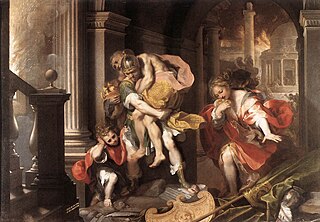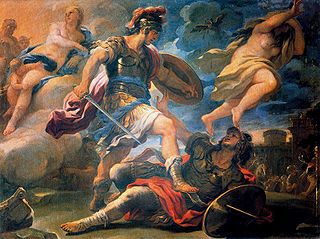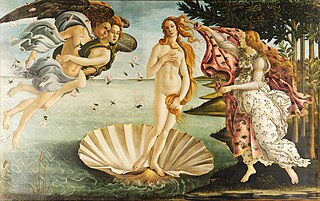![Woodcut illustration of Camilla and Metabus escaping into exile, from an incunable German translation by Heinrich Steinhowel of Giovanni Boccaccio's De mulieribus claris, printed by Johann Zainer [de] at Ulm ca. 1474 Woodcut illustration of Camilla and Metabus escaping into exile - Penn Provenance Project.jpg](http://upload.wikimedia.org/wikipedia/commons/thumb/8/8f/Woodcut_illustration_of_Camilla_and_Metabus_escaping_into_exile_-_Penn_Provenance_Project.jpg/220px-Woodcut_illustration_of_Camilla_and_Metabus_escaping_into_exile_-_Penn_Provenance_Project.jpg)
In Virgil's Aeneid , Camilla of the Volsci is the daughter of King Metabus and Casmilla. [1]
![Woodcut illustration of Camilla and Metabus escaping into exile, from an incunable German translation by Heinrich Steinhowel of Giovanni Boccaccio's De mulieribus claris, printed by Johann Zainer [de] at Ulm ca. 1474 Woodcut illustration of Camilla and Metabus escaping into exile - Penn Provenance Project.jpg](http://upload.wikimedia.org/wikipedia/commons/thumb/8/8f/Woodcut_illustration_of_Camilla_and_Metabus_escaping_into_exile_-_Penn_Provenance_Project.jpg/220px-Woodcut_illustration_of_Camilla_and_Metabus_escaping_into_exile_-_Penn_Provenance_Project.jpg)
In Virgil's Aeneid , Camilla of the Volsci is the daughter of King Metabus and Casmilla. [1]
Driven from his throne, Metabus is chased into the wilderness by armed Volsci, his infant daughter in his hands. The river Amasenus blocked his path, and, fearing for the child's welfare, Metabus bound her to a spear. He promised Diana that Camilla would be her servant, a warrior virgin. He then safely threw her to the other side, and swam across to retrieve her. The baby Camilla was suckled by a mare, and once her "first firm steps had [been] taken, the small palms were armed with a keen javelin; her sire a bow and quiver from her shoulder slung." [2] She was raised in her childhood to be a huntress and kept the companionship of her father and the shepherds in the hills and woods.
Modern scholars are unsure if Camilla was entirely an original invention of Virgil, or represents some actual Roman myth. [3] In his book Virgil's Aeneid: Semantic Relations and Proper Names, Michael Paschalis speculates that Virgil chose the river Amasenus (today the Amaseno, near Priverno, ancient Privernum) as a poetic allusion to the Amazons with whom Camilla is associated. [4]
In the Aeneid , she helped her ally, King Turnus of the Rutuli, fight Aeneas and the Trojans in the war sparked by the courting of Princess Lavinia. Arruns, a Trojan ally, stalked Camilla on the battlefield, and, when she was opportunely distracted by her pursuit of Chloreus, killed her. [5] Diana's attendant, Opis, at her mistress' behest, avenged Camilla's death by slaying Arruns. [6] Virgil says that Camilla was so fast on her feet that she could run over a field of wheat without breaking the tops of the plants, or over the ocean without wetting her feet. [7]
Giovanni Boccaccio's De mulieribus claris includes a segment on Camilla. She is not often a subject in art, but the female figure in Pallas and the Centaur by Sandro Botticelli (c. 1482, Uffizi) was called "Camilla" in the earliest record of the painting, an inventory of 1499, but then in an inventory of 1516 she is called Minerva, which remains her usual identification in recent times. [8] She was the subject of an internationally successful opera, Camilla by Giovanni Bononcini (1696). [9]
Camilla is similar to Penthesilea of Greek mythology. [10]

In Greco-Roman mythology, Aeneas was a Trojan hero, the son of the Trojan prince Anchises and the Greek goddess Aphrodite. His father was a first cousin of King Priam of Troy, making Aeneas a second cousin to Priam's children. He is a minor character in Greek mythology and is mentioned in Homer's Iliad. Aeneas receives full treatment in Roman mythology, most extensively in Virgil's Aeneid, where he is cast as an ancestor of Romulus and Remus. He became the first true hero of Rome. Snorri Sturluson identifies him with the Norse god Víðarr of the Æsir.

The Aeneid is a Latin epic poem that tells the legendary story of Aeneas, a Trojan who fled the fall of Troy and travelled to Italy, where he became the ancestor of the Romans. Written by the Roman poet Virgil between 29 and 19 BC, the Aeneid comprises 9,896 lines in dactylic hexameter. The first six of the poem's twelve books tell the story of Aeneas' wanderings from Troy to Italy, and the poem's second half tells of the Trojans' ultimately victorious war upon the Latins, under whose name Aeneas and his Trojan followers are destined to be subsumed.

In Greek mythology, the Trojan Horse was a wooden horse said to have been used by the Greeks during the Trojan War to enter the city of Troy and win the war. The Trojan Horse is not mentioned in Homer's Iliad, with the poem ending before the war is concluded, and it is only briefly mentioned in the Odyssey. But in the Aeneid by Virgil, after a fruitless 10-year siege, the Greeks constructed a huge wooden horse at the behest of Odysseus, and hid a select force of men inside, including Odysseus himself. The Greeks pretended to sail away, and the Trojans pulled the horse into their city as a victory trophy. That night, the Greek force crept out of the horse and opened the gates for the rest of the Greek army, which had sailed back under the cover of darkness. The Greeks entered and destroyed the city, ending the war.

Alessandro di Mariano di Vanni Filipepi, better known as Sandro Botticelli or simply Botticelli, was an Italian painter of the Early Renaissance. Botticelli's posthumous reputation suffered until the late 19th century, when he was rediscovered by the Pre-Raphaelites who stimulated a reappraisal of his work. Since then, his paintings have been seen to represent the linear grace of late Italian Gothic and some Early Renaissance painting, even though they date from the latter half of the Italian Renaissance period.
In Greek mythology, Theano may refer to the following personages:

Turnus was the legendary King of the Rutuli in Roman history, and the chief antagonist of the hero Aeneas in Virgil's Aeneid.

In Roman mythology, Lavinia is the daughter of Latinus and Amata, and the last wife of Aeneas.
In Roman mythology, Caeculus was a son of Vulcan, and the legendary founder of Praeneste.

In Roman mythology, King Metabus of the Volsci was the father of Camilla.

The Birth of Venus is a painting by the Italian artist Sandro Botticelli, probably executed in the mid 1480s. It depicts the goddess Venus arriving at the shore after her birth, when she had emerged from the sea fully-grown. The painting is in the Uffizi Gallery in Florence, Italy.

Pallas and the Centaur is a painting by the Italian Renaissance painter Sandro Botticelli, c. 1482. It is now in the Uffizi Gallery in Florence. It has been proposed as a companion piece to his Primavera, though it is a different shape. The medium used is tempera paints on canvas and its size is 207 x 148 cm. The painting has been retouched in many places, and these retouchings have faded.
In Greek mythology, Asius refers to two people who fought during the Trojan War:

In Greek and Roman mythology, Nisus and Euryalus are a pair of friends serving under Aeneas in the Aeneid, the Augustan epic by Virgil. Their foray among the enemy, narrated in book nine, demonstrates their stealth and prowess as warriors, but ends as a tragedy: the loot Euryalus acquires attracts attention, and the two die together. Virgil presents their deaths as a loss of admirable loyalty and valor. They also appear in Book 5, during the funeral games of Anchises, where Virgil takes note of their amor pius, a love that exhibits the pietas that is Aeneas's own distinguishing virtue.
Venulus was an ambassador sent by Turnus of Ardea to the Greek hero Diomedes to request assistance in a war against Aeneas. He appears as a character in Vergil's Aeneid and Ovid's Metamorphoses ; in both epics, he seems to serve as a proxy or counterpart of the goddess Venus, whose name is incorporated in his own. There is no evidence for his existence beyond the Aeneid and Metamorphoses.
In Greek mythology, the name Ilioneus may refer to:

Polydorus or Polydoros is the youngest son of Priam in the mythology of the Trojan War. While Homer states his mother is Laothoe, later sources state his mother is Hecuba. Polydorus is an example of the fluid nature of myth, as his role and story vary significantly in different traditions and sources.

Venus and Mars is a panel painting of about 1485 by the Italian Renaissance painter Sandro Botticelli. It shows the Roman gods Venus, goddess of love, and Mars, god of war, in an allegory of beauty and valour. The youthful and voluptuous couple recline in a forest setting, surrounded by playful baby satyrs.

Primavera, is a large panel painting in tempera paint by the Italian Renaissance painter Sandro Botticelli made in the late 1470s or early 1480s. It has been described as "one of the most written about, and most controversial paintings in the world", and also "one of the most popular paintings in Western art".
Camilla was an opera first performed at Drury Lane in London on 30 April 1706. The libretto was based on Il Trionfo di Camilla, regina de' Volsci by Silvio Stampiglia, translated into English verse by Owen Swiny, Peter Motteux, or others. Authorship of the music for the original is attributed variously to Giovanni Bononcini and to his brother Marc Antonio. Music for the London version was adapted by Nicola Haym. The opera was the first to be sung in a mixture of English and Italian, and it was one of the first London operas in which the castrato Nicolò Grimaldi performed.
In Greek mythology, Opis or Upis (Οὖπις) may refer to the following characters:
{{cite book}}: |website= ignored (help)